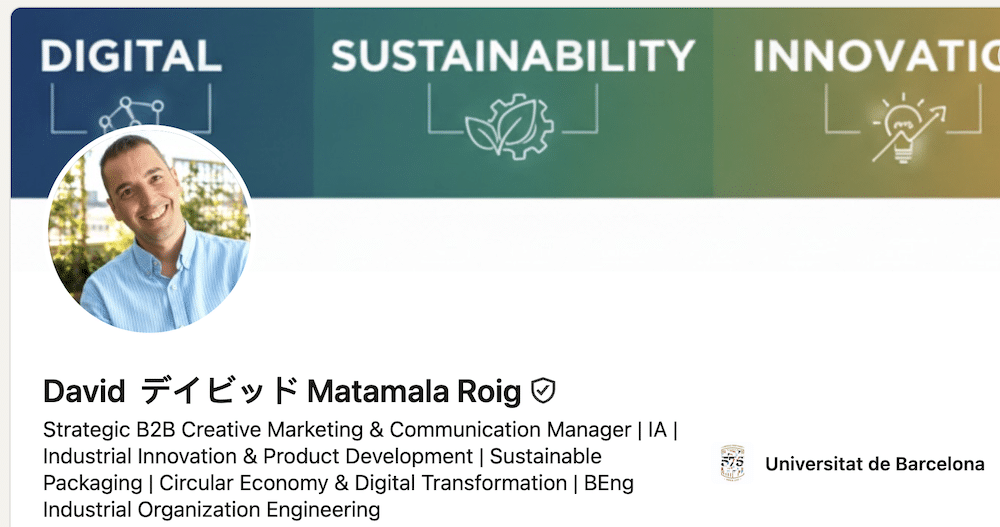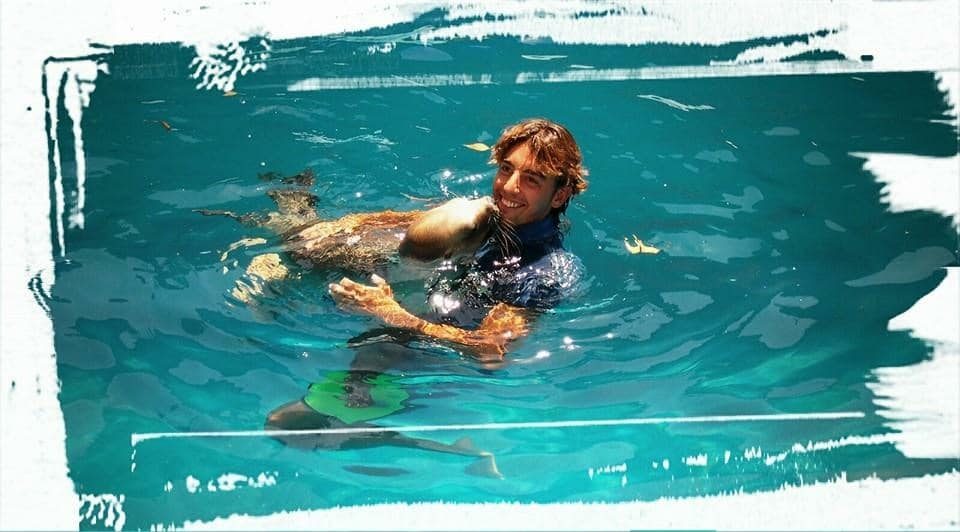November 2025: Interview with David Matamala Roig
Innovation, Sustainability, and Vision in Cosmetic Packaging

Innovation, Sustainability, and Vision in Cosmetic Packaging
I consider myself a professional who bridges three worlds: marketing strategy, technological innovation, and applied sustainability. My career path has been quite eclectic: I started in the audiovisual field, which gave me a strong narrative and creative sense. Later, I specialized in digital marketing and business transformation, which allowed me to understand how brands communicate and grow in an increasingly digital environment. I’m currently studying Industrial Organization Engineering, which is giving me a more technical and process-oriented perspective.
At Faca Packaging, where I'm working for over four years as Head of Marketing and Communications. I have strengthened the brand both digitally and externally through the launch of new websites and the introduction of innovative projects. I combine my skills to lead projects that are visually compelling and also contribute to business growth. In this industry, packaging is not just about aesthetics, it’s about engineering, functionality, regulatory compliance, and communication.
To remain competitive, it is essential to embrace new projects and collaborations. I am actively involved, alongside Acció, the Diputació de Barcelona, and the Generalitat de Catalunya, in the introduction of new international programs and an open innovation strategy, encouraging the company to invest time and resources in building collaborative partnerships.



I worked for five years in the conservation of marine mammals, an environment that combines science, education, and animal care.
I believe that when approaching a new packaging project, its entire life cycle and final destination must be considered. For me, this is a responsibility born from having witnessed firsthand the damage caused by inaction in recent years.
I believe we’re at a point where several powerful trends are converging. On one side, we have packaging digitalization, which goes far beyond a simple QR code. We’re entering the era of connected packaging—integrating NFC or blockchain technology to enable full traceability, deliver verified consumer information, and create interactive brand experiences.
At the same time, smart refill systems are redefining the market. It’s not just about placing a refill into an attractive container, it’s about designing systems that preserve the luxury experience, enhance ergonomics, and significantly reduce environmental impact. In the premium segment, the real challenge lies in maintaining aesthetics and functionality while fully embracing a circular mindset.
I have participated in several round tables on this topic, the most recent one at the Perfumery & Beauty Congress in Barcelona.
Participating in round tables and conferences is a key part of staying connected to the industry’s latest developments and opportunities. I have been involved in the Round Table at the Barcelona Perfumery Congress 2025, took part in Beauty Day 2024 in Madrid, joined the Graphispag Barcelona 2024 round table, and contributed at Empack 2024 - 2025 , and others. These platforms have allowed me to engage with experts in packaging, cosmetics, and design while discussing the future of sustainability, digital transformation, and material innovation.
Beyond speaking engagements, I attend numerous industry, technology, and research events as part of my networking strategy, ensuring I remain in touch with emerging trends, global market needs, and potential collaborations. These interactions not only broaden my perspective but also inspire solutions that combine creativity, technical precision, and sustainability.
In Europe, the new Packaging and Packaging Waste Regulation (PPWR) represents an important step toward sustainability, although there are still aspects that, in my view, could be further optimized. The requirement to incorporate a minimum percentage of recycled content in certain plastics is a step in the right direction, although its practical implementation may be influenced by the availability and quality of recycled materials in the market, as often discussed in various international industry forums. Similarly, in sectors such as cosmetics, product protection requirements have an impact on material choices and on the thickness of components. For this reason, it is essential that regulations evolve in line with technical realities and are supported by scientific data and life cycle analyses, ensuring that the measures adopted deliver tangible and lasting environmental benefits
I believe the most impactful opportunities will emerge in three interconnected areas.
The first is digital integration, where smart packaging powered by NFC, QR codes, or blockchain will not only authenticate products but also provide consumers with refill reminders, sustainability tips, and personalized after-sales experiences, transforming packaging from a passive container into an active communication channel.
The second is material innovation, focusing on high-quality recycled polymers and bio-based resins that can meet the technical and aesthetic standards of luxury cosmetics. The challenge and the opportunity lie in achieving the same tactile feel, transparency, and durability as virgin materials while reducing environmental impact.
The third is design for disassembly, ensuring that every component, from caps and pumps to bottles, can be easily separated and sorted for recycling. This approach opens the door to innovative assembly methods, smarter choices, and more sustainable decorative techniques, all considered from the very start of the design process.
An exceptional opportunity is emerging to invest in advanced manufacturing machinery and technologies, enabling retailers to offer highly efficient, customizable, and sustainable refill and distribution models at scale. This evolution inspires a shift in consumer habits, creates new business opportunities, strengthens customer loyalty, and elevates brand value. By advancing these areas together, the industry accelerates the transition toward a fully circular packaging economy, where sustainability, profitability, and brand prestige grow in perfect harmony.
Absolutely. I have always been surrounded by international teams from different nationalities and cultures, and early in my career I served as an international coordinator for European universities in the tourism and hospitality sector. That experience played a key role in my professional growth, giving me a deep understanding of how to work effectively with people from a wide range of backgrounds.
I consider myself a highly flexible person, with a natural ability to adapt and integrate into different cultural environments.
"For me, innovation is about creating meaningful change that unites brands, people, and the planet, driven by a lifelong commitment to learning and adaptation, and by designing packaging that harnesses technology to be truly distinctive, purposeful, and coherent"
